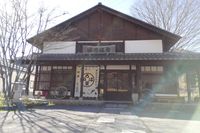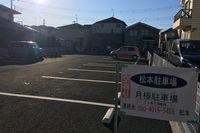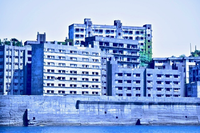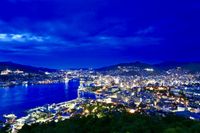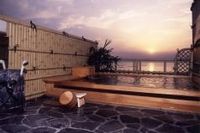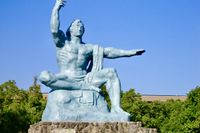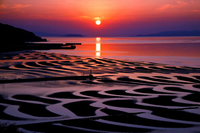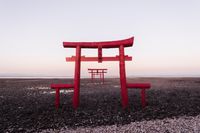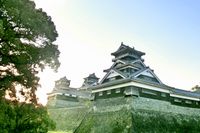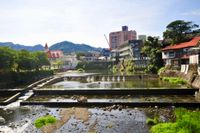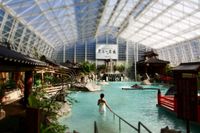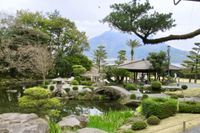Sakitsu Church
熊本県/天草市

Description
It is a village registered as a World Heritage Site, and was a town of "Kirishitan" (a Japanese catholic movement). Amakusa Shiro, the 16 year old supreme leader of the movement, led 40,000 oppressed Christians into battle, fighting the Tokugawa Shogunate in the "battle of Shimabara", which took place here. Even after the defeat of the Christian army, in Sakitsu, many Christians continued their faith in secret, whilst pretending to be buddhists on the outside.
Homepage
Address
Nearby Car Night Spots
There is no nearby car night spots
Nearby Activities
There is no nearby activities
Ranking Stations
Shin Meishin Suzuka PA (inbound) RV Station Suzuka * With Power!
¥2,200〜
/ per nightMie Yamamotocho, Suzuka-shi
4.3
(155)Vanlife BASE | 45 min. from Narita Airport / Perfect for campervan travel/A seaside town rich in nature/Japanese countryside town/welcome traveler
¥7,000〜
/ per nightChiba Koseki, Kujukuri-machi, Sambu-gun
5.0
(61)Nearby Drive Spots
Hashima Island
世界遺産に登録されている、長崎市にある無人島です。江戸時代から海底炭鉱によって栄え、昭和時代には東京以上の人口密度を有する島でした。1974年に閉山してからは無人島となり、廃墟ブームの盛り上がりとともに多くの観光客を引き寄せています。
Mount Inasa
This is a 333 meter high mountain in Nagasaki city. There is an observation deck which offers splendid views of Nagasaki port below, but is mainly known as one of the top 3 night view spots in Japan. In fact, it is known as one of the top 3 night view spots in the world, along with places in Monaco and Hong Kong.
Unzen Onsen
This is a hot spring in Unzen city, built in 701 AD. From the Edo era(1603-1868) up until the Meiji era(1868-1912), it developed as a resort area for many foreigners who visited Nagasaki, with Sea Bolt being one of the first. The 30 Onsen have the smell of the naturally occurring sulphur and smoke, known as the "Unzen hell". It also has a sad history of being witness to Christian martyrdom.
Nagasaki Peace Park
This is the place where nuclear weapons were dropped in the Pacific War in 1945, three days after Hiroshima bombing. The bombing on August 9th destroyed an area of around 6.7 million square meters, with about 74,000 people dead. A park was built in 1950 for wishes of peace. In the center is a "Peace Prayer statue" that symbolizes the love of God and the mercy of Buddha, with the right hand representing the threat of the atomic bomb, the left hand representing peace, and the closed eyes praying for the victims' souls.
Okoshiki Beach
This is a coastal area in the western part of Kumamoto prefecture. The name comes from a 2000 year old legend where an emperor on an expedition to Kyushu carrying an Omikoshi (portable shrine) is said to have stopped and stared in enchantment at the coastline. The beach has a beautiful coastline punctuated with the waves and wind.
Ouo Shrine
This is a shrine built around 1700. There is a legend that says that an officer who was stranded on Okinoshima island was saved by a large fish, and built Torii gates in the water, which is now commemorates as a protective sea God. At low tide, it is possible to walk through the Torii gates along the sea path, but these are submerged at high tide.
Kumamoto Castle
This is one of Japan's three most famous castles, built in 1607 by Kato Kiyomasa. The castle is famous for being the place where Miyamoto Musashi, the most famous Japanese sword warrior and author of the martial art "book of five rings" spent his later years, as well as being the scene to the Southwestern War, the final civil war in Japanese history. The main hall known as the "Shokun no Ma" represents the grandiose and opulent Daimyo culture. The castle was damaged by the Kumamoto earthquake of 2016, but has been restored.
Ureshino Onsen
This is an area with a small hot natural hot spring in Southern Saga prefecture. It has 1900 years of history with several traditional Japanese inns along the Ureshino Rivers, making it one of Kyushu's largest Onsen towns. The Onsen is popular with women due to the water's skin enhancing properties. It also has a special local product known as Ureshino Onsen tofu.
Kirishima Onsen
This is an Onsen which is at the halfway point up Mount Kirishima. It has 300 years of history, and is famous for apparently being the first place used as a honeymoon destination, by the Sakamoto Ryoma couple. After the war, various "snack" bars (small pub like bars, often with Karaoke as well), and souvenir shops are aplenty, and has therefore become a popular tourist Onsen.
Senganen Garden
This is a world heritage park built in 1658 by Shimazu Mitsuhisa. It is famous as a place where Tenshoin Atsu-hime who was married to the Tokugawa Shogunate, visited, with its magnificent scenery with Kagoshima bay as the garden pond. At the end of the Edo period(1603-1868), the remains of the steelmaking and glass production sites were preserved in the premises, making it a precious industrial revolutionary heritage site.





